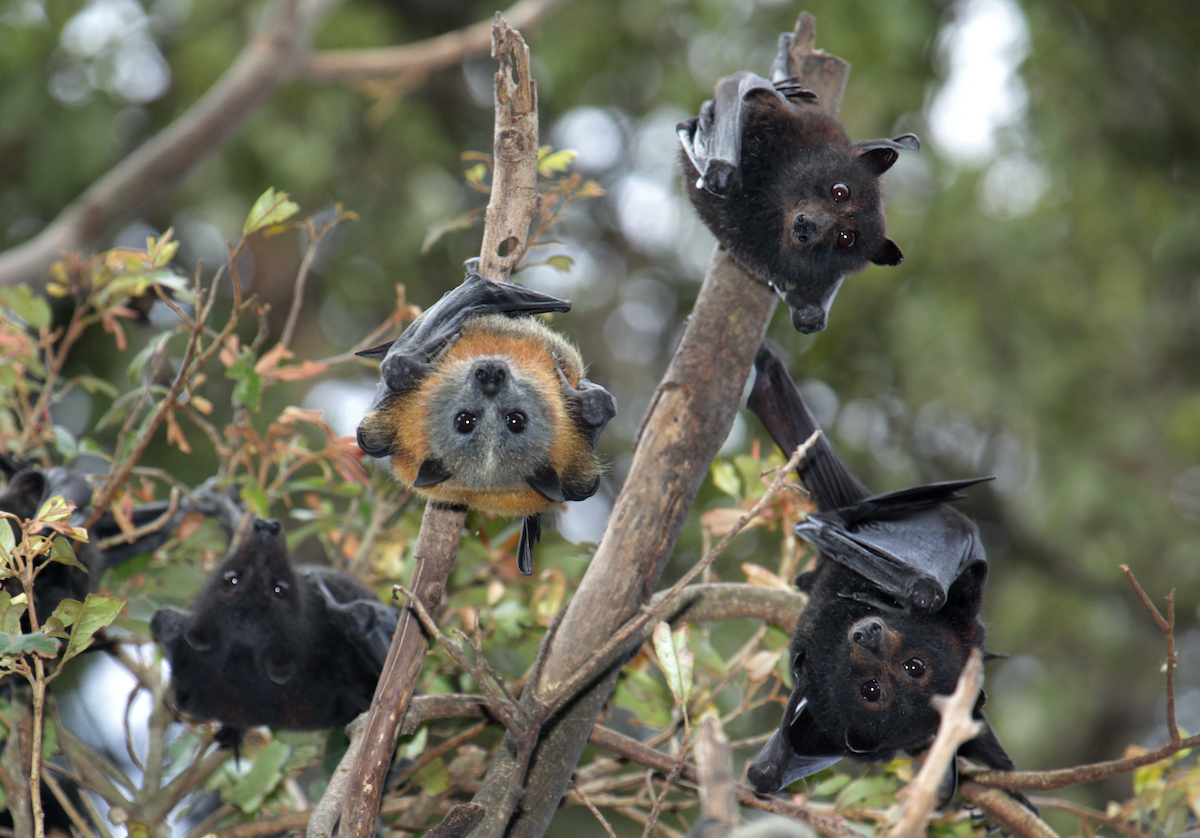Media release
From: Griffith UniversityGriffith University researchers have discovered that a new Hendra virus variant may pass to horses and humans much more widely across Australia than previously known.
Published in Emerging Infectious Disease, the variant was detected in the urine of black flying foxes and grey-headed flying foxes across an extended geographical distribution from mid-north coast NSW to southeast Queensland.
The new Hendra virus variant (HeV-g2) was recently discovered in samples from a horse that died in 2015 with acute illness and was previously detected in flying fox organs.
Detection of the novel Hendra variant in urine is important, as contact with infected flying fox urine is how horses can become infected,” said lead researcher Dr Alison Peel, from the Centre for Planetary Health and Food Security.
“Our study, by revealing associations with particular flying fox species, helps to identify the variant’s distribution in these animals and the risk of spill-over into horses and subsequently humans.
“The distribution of grey-headed flying foxes extends into areas of NSW, Victoria and South Australia not typically considered as high-risk for Hendra spillover. But our evidence suggests that the risk of Hendra virus to horses and their carers should be a consideration wherever the ranges of flying foxes and horses overlap.”
Hendra virus is a pathogen that circulates naturally in Australian bats (flying-foxes). Spill-over of the original Hendra virus variant from bats to horses has been detected 65 times and four of seven people subsequently infected from horses have died.
In October 2021, the new HeV-g2 variant of the Hendra virus is known to have resulted in the death of a horse near Newcastle, New South Wales, Australia, further south than previously detected in horses.
“Due to the highly-specific nature of the PCR assays used to detect Hendra virus, variants with differing genetic sequences can remain undetected,” Dr Peel said.
“The new HeV-g2 strain of the virus would not have been detected by genetic assays used in previous large-scale surveillance of potential hosts.
“We used a new PCR assay that can detect both variants, developed by our collaborators at the University of Sydney and CSIRO, to screen flying-fox urine samples collected over a large area of northeast NSW and southeast Queensland.”
The study screened over 6,000 flying fox urine samples collected between December 2016 and September 2020 as part of the Bat One Health research program conducted in collaboration with Montana State University and Rocky Mountain Laboratories.
“The HeV-g2 variant was detected across all seasons, however predominantly in the cooler months between late May–late August, which is consistent with the occurrence of the original Hendra virus variant in the same region,” Dr Peel said.
“Direct evidence of HeV-g2 was found in urine samples taken from individual bats; one from a juvenile female grey-headed flying fox and the other an adult male black flying fox.
“We also used DNA analysis on samples collected underneath flying fox roosts to show that both black flying foxes and grey-headed flying foxes were contributing and are potential reservoirs of the virus.”
Detection of the new Hendra virus variant ranged from Brisbane to Nambucca Heads in NSW. This extends the known range of this new variant, which had only been previously detected in South Australia, Victoria and Western Australia.
"This information will help horse owners and veterinarians across Australia consider the risk of Hendra virus and take steps such as vaccinating their horses to reduce this risk.
Dr Peel and team suggest that the development of a more comprehensive panel of diagnostic tools is needed to detect spill-overs from wildlife to domestic animals and people, in order to guide decisions on appropriate disease surveillance in horses, to underpin forecasts of spill-over risk, manage biosecurity, and inform advice given to horse owners, veterinarians, and others interacting with horses.
“But importantly, we also need to focus on supporting bats in their natural ecosystems. They are protected species and healthy bats means less spillover and better health for people. Flying foxes travel large distances across the landscape and play a vital role in pollinating and maintaining our native forests. Protecting bats and their natural habitat across their large ranges, is a triple win for human health, nature conservation and for the bats.”


